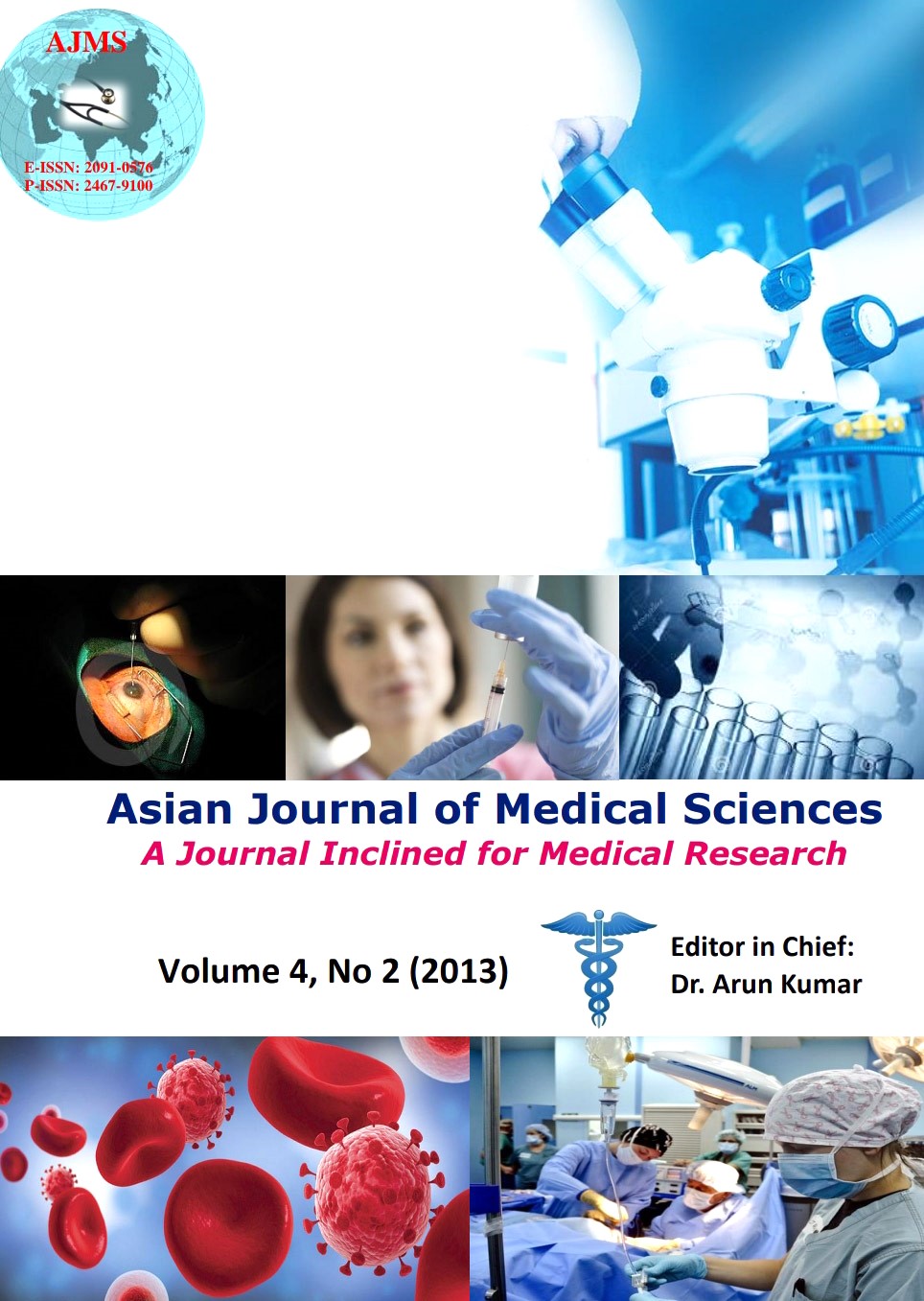A newer approach for the serodiagnosis of leptospirosis using outer membrane proteins of leptospira interrogans serovar tarassovi
Keywords:
Leptospirosis, OMPs, IgM ELISA, L. Tarassovi, serodiagnosisAbstract
Objective: Leptospirosis in humans occurs throughout the world as an acute infection ranging imperceptible to severe, potentially fatal, renal and liver failure accompanied by haemorrhage and jaundice. In India, according to number of reports, Leptospirosis has been a significant health problem since 1980. This disease mimics influenza, hepatitis, dengue owing to which it often goes undiagnosed due to lack of awareness and diagnostic facilities in most of the laboratories in the country. This study was undertaken to diagnose suspected cases of Leptospirosis by IgM ELISA, DRIDOT and MAT, and also to standardize an in house IgM ELISA using OMP antigens of the L.tarassovi the predominant serovar in the study
Materials & Methods: Blood samples were collected from a total of 287 patients (186 male and 101 female) presenting with acute febrile illness and fulfilling the criteria of clinical diagnosis of Leptospirosis. All the samples & healthy controls were subjected to ELISA (IgM serion), dridot, MAT, and Leptospira serovar Tarassovi OMP IgM ELISA, and for isolation of Leptospira.
Results: IgM antibody could be detected by ELISA, Dridot and OMP ELISA of L. Tarassovi from Group I and Group II sera samples. It was observed by MAT that L.Tarassovi was the predominant serovar followed by L.australis, L.autumnalis, L.sejroe, L.pyrogenes, L.ballum, L.canicola, L.icterocopenhageni, L.cynopteri. A total of 5 isolates were recovered from Group I patients.
Conclusion: IgM ELISA using sarcosyl extracted OMP antigens of serovar Tarassovi when compared with MAT the overall sensitivity and specificity was 72% and 81% respectively. The same sera reacted with serovar Australis, serovar Tarassovi, serovar Sejroe, serovar Pyrogenes, serovar Ballum and serovar Icterocopenhageni in MAT.
DOI: http://dx.doi.org/10.3126/ajms.v4i2.6693
Asian Journal of Medical Sciences 4(2013) 41-46
Downloads
Downloads
Published
How to Cite
Issue
Section
License
Authors who publish with this journal agree to the following terms:
- The journal holds copyright and publishes the work under a Creative Commons CC-BY-NC license that permits use, distribution and reprduction in any medium, provided the original work is properly cited and is not used for commercial purposes. The journal should be recognised as the original publisher of this work.
- Authors are able to enter into separate, additional contractual arrangements for the non-exclusive distribution of the journal's published version of the work (e.g., post it to an institutional repository or publish it in a book), with an acknowledgement of its initial publication in this journal.
- Authors are permitted and encouraged to post their work online (e.g., in institutional repositories or on their website) prior to and during the submission process, as it can lead to productive exchanges, as well as earlier and greater citation of published work (See The Effect of Open Access).




